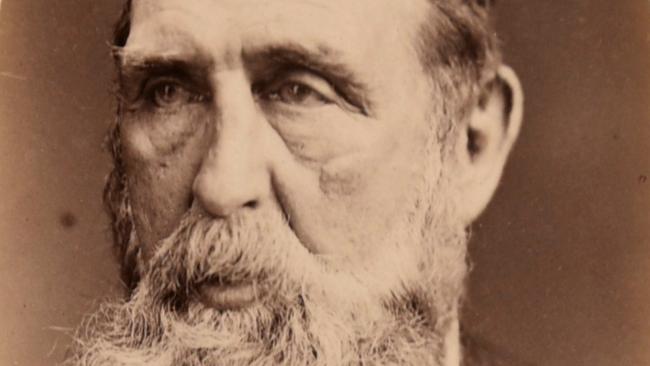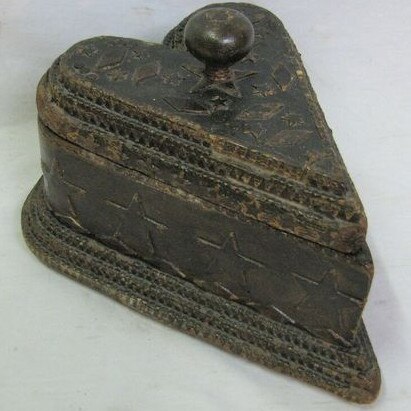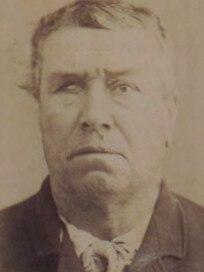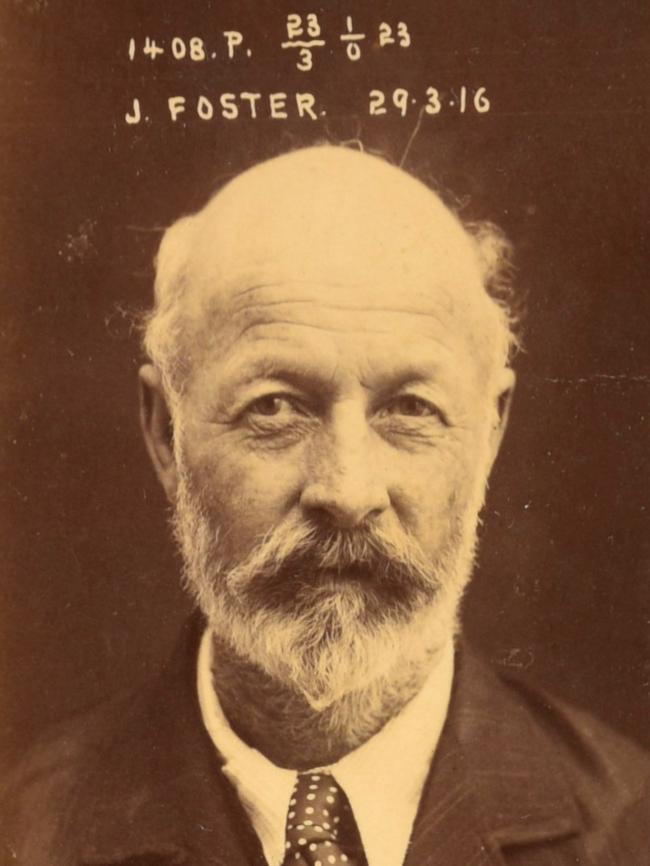The 1840s ex-convict who swindled Melburnians with this one simple trick
Ex-convict Smith Brown used a heart-shaped wooden matchbox and one simple trick to fool 1800s Melburnians into handing over their savings, making him one of old Melbourne’s craftiest conmen. LISTEN TO THE PODCAST.

Black and White
Don't miss out on the headlines from Black and White. Followed categories will be added to My News.
Smith Brown was a convict who became one of Australia’s first conmen.
From the 1850s to the 1890s he preyed on the gullible, robbing them with the use of a specially designed puzzle box.
Brown is the subject of the second episode in a five-part miniseries on old Melbourne’s craftiest conmen for the free In Black and White podcast on Australia’s forgotten characters.
Brown was born in England in 1820 and transported to Tasmania as a convict in 1842 for thieving. It was only his 2nd conviction, but he was already considered by British authorities to be a companion of thieves. After eight years of penal servitude he was released, moving to Melbourne just in time for the 1850s gold rush. There was plenty of money around and a lot was won and lost over card games. Brown quickly became known as the leader of the card shark gangs in Victoria.


As the days of the gold rush dwindled, he became more inventive in the way he abstracted money from the unwary.
In an 1884 police report, Detective Nixon described Brown as being “a master of the padlock trick, matchbox trick, and all the spieling devices”.
‘Spieling’ was the old word for ‘swindling’, and the ‘matchbox trick’ was a specialty of Brown’s. He owned a wooden ‘match box’ which was the shape of a heart. The box had been constructed for him by a toymaker, and it had a secret locking mechanism. He made money from this device by betting people they couldn’t open it.
By the 1890s Brown had relocated to Sydney and was described by the newspapers there as a “venerable looking gentleman, dressed in a tall silk hat, frock coat etc, with a silvery beard to the bottom of his vest” and “a nose that has been knocked out of the straight line.”
Brown always operated with at least one other team member. It was their job to identify an appropriate victim, and then to befriend them and develop confidence.


To give you an idea of how his scams worked, here’s a real story.
In 1892, a young man, Donald Daniell, took a seat on a bench in Sydney’s Botanical Gardens. He was soon joined by two affable strangers. Little did he know that his two new friends were members of Brown’s conman gang. They were all chatting amiably when Brown walked past, a small wooden heart-shaped matchbox falling from his pocket. As Brown disappeared around the corner, they picked up the box and took turns to open and close it. Inside was the photo of a beautiful woman.
Brown returned several minutes later, looking worried and scouring the ground.
When they gave him his box, he explained that it was his greatest treasure and that he was the only one who knew the secret to opening it. He was so grateful for its return that he wished to reward them each with £25. First though, he needed them to prove that they were good with money and wouldn’t waste it. They must show him all their savings. A meeting for later was organised, and the three men rushed off in different directions to gather what money they could. Daniell was only able to scrape together £16. He hoped that it would be enough to convince the wealthy benefactor.

When they met, the other two men pulled out large sums of money and placed it in Brown’s hat for his inspection. Daniell followed their lead and did so too. Brown then produced a large roll of notes and went to hand out the money: £25 each.
There was an outcry as the other two men pretended to try to trick Brown, claiming that he’d promised them £75 each. Brown acted like he was offended, but eventually put his whole roll of notes into the hat with the rest. He then gave a wink and said he’d bet the lot that Daniell couldn’t open the heart-shaped box in under 20 seconds. Urged on by the others, Daniell agreed to the bet. He’d been able to open the box earlier, so it seemed easy money. He didn’t realise that Brown had flicked the secret locking mechanism and he didn’t stand a chance.
Brown counted to 20, inspected the unopened box, shrugged his shoulders, put the hat full of money on his head, and walked away.
Daniell had lost £16, but he felt worse for his two companions. They’d lost a lot more and it was his fault for forgetting how to open the box.

He later realised he’d been conned, and police went looking for the most likely culprit. When arrested, Brown had in his pocket: a heart-shaped box and a roll of notes wrapped around newspaper to make it look bigger. By this time, he was in his 70s and had served a dozen prison sentences in Australia.
In 1897, while serving another term of imprisonment, Smith Brown was diagnosed with senile debility and transferred to a lunatic asylum. He passed away there in 1901, aged 81.
The “leader of conmen” may have been dead, but his heart-shaped box trick would be replicated by other swindlers for decades to come.
Michael Shelford is a Melbourne writer, researcher, and creator and guide for Melbourne Historical Crime Tours.
Listen to the interview with Michael Shelford now in today’s new free episode of the In Black and White podcast on Australia’s forgotten characters on Apple/iTunes, Spotify, web or on your favourite platform.
Listen to Part 1 in our series on old Melbourne’s craftiest conmen – the story of shonky undertaker Charles Jones, who got fed up paying religious ministers to officiate at his funerals, so simply registered his own church with himself as its preacher.
Listen to previous episodes with Michael Shelford including the colourful life of crim “Big Squizzy” Claude Taylor, older brother to underworld king “Squizzy” Taylor, and Madame Reprah, the mysterious South Yarra mind reader who made a fool of Victoria’s police chief.
And check out In Black & White in the Herald Sun newspaper Monday to Friday to see more stories from Victoria’s past.
